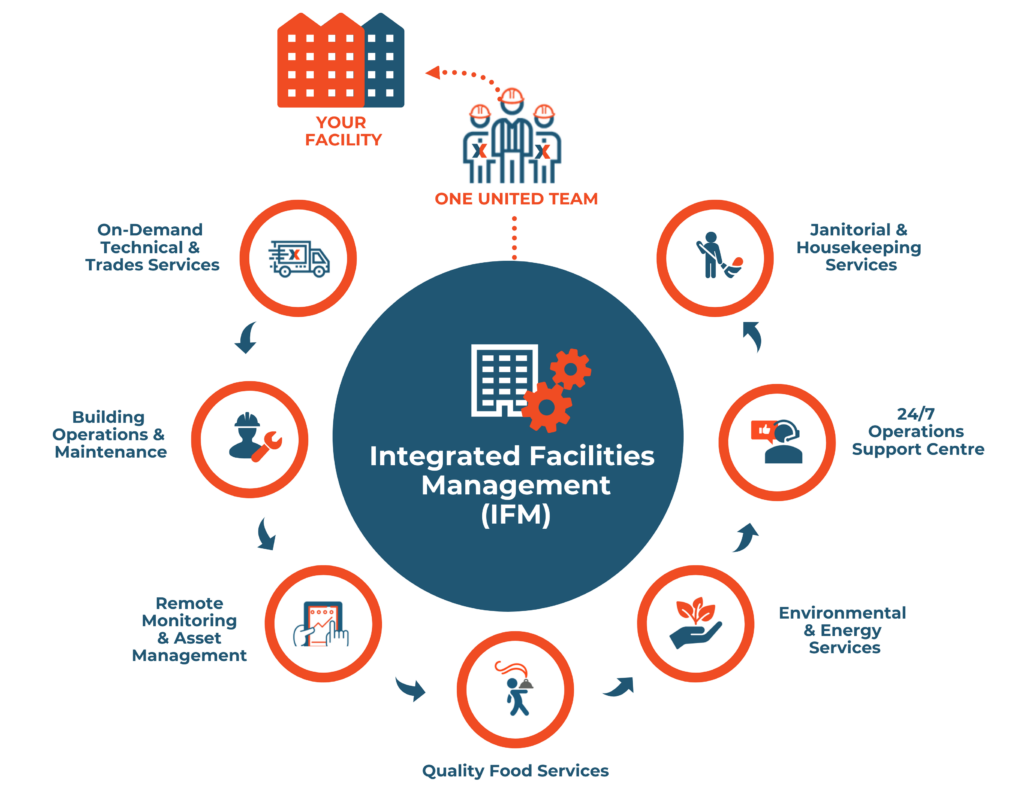Why Facility Management is Crucial for Asset Durability
Why Facility Management is Crucial for Asset Durability
Blog Article
Key Trends Shaping the Future of Facility Management in 2024
As we look in advance to 2024, the landscape of facility management is poised for considerable change, driven by numerous key trends. The combination of wise structure modern technologies and a change in the direction of data-driven decision-making pledge to improve operational efficiency while prioritizing sustainability in technique.
Smart Structure Technologies

Smart building innovations incorporate a wide range of systems, consisting of smart lighting, cooling and heating controls, and safety and security systems. By incorporating these systems, center supervisors can monitor and adjust parameters in real-time, leading to significant reductions in energy waste and functional costs. For circumstances, smart sensing units can identify tenancy levels and change lighting and temperature level as necessary, making certain that power is just utilized when needed.
Additionally, these technologies help with enhanced information collection, enabling organizations to track usage patterns and determine possibilities for further enhancements. The implementation of clever building technologies not only adds to sustainability objectives however likewise produces healthier work settings that can boost staff member efficiency and contentment.
As we move right into 2024, the adoption of smart structure technologies will likely accelerate, reflecting a broader change towards more smart, responsive, and sustainable center management techniques.
Data-Driven Decision Making
Increasingly, companies are leveraging data-driven choice making to enhance center management methods. By harnessing data analytics, center managers can derive actionable insights that considerably boost operational performance and source appropriation. The integration of innovative innovations, such as IoT sensing units and real-time tracking systems, makes it possible for the collection of vast quantities of data on building performance, tenancy prices, and energy consumption.
This wide range of info enables facility supervisors to recognize patterns, anticipate upkeep demands, and proactively address issues prior to they rise. Predictive analytics can forecast equipment failings, decreasing downtime and repair work prices. Additionally, information visualization tools help with better communication among stakeholders, making certain that educated decisions are made collaboratively.
Additionally, data-driven methods boost critical planning by making it possible for facility supervisors to evaluate the performance of present techniques and make notified selections concerning investments in technology or framework. As companies increasingly focus on operational quality, data-driven choice production is positioned to end up being a cornerstone of successful center monitoring techniques in 2024 and beyond. Eventually, the ability to take advantage of information efficiently will equip organizations to create more efficient, effective, and durable centers.
Sustainability and Eco-friendly Practices
The emphasis on data-driven decision making normally lines up with the growing focus on sustainability and eco-friendly techniques within center administration. As organizations significantly prioritize ecological obligation, facility managers are leveraging analytics to enhance resource usage, reduce waste, and lessen carbon impacts. This critical approach enables the combination of energy-efficient systems, such as LED illumination, smart HVAC controls, and renewable power i was reading this resources right into center operations.
Moreover, the application of sustainable methods extends beyond energy consumption. Facility supervisors are promoting and embracing eco-friendly materials reusing initiatives to develop a circular economic climate within their facilities. This not only boosts the ecological account of the company but additionally cultivates a culture of sustainability among staff members.
Conformity with ecological regulations is an additional crucial facet driving the adoption of eco-friendly practices. By using information analytics, center supervisors can keep an eye on conformity metrics and determine areas for improvement, ensuring adherence to worldwide and regional sustainability standards.
Hybrid Job Designs
A significant shift towards hybrid work designs is improving the landscape of facility administration in 2024. This standard integrates remote and in-office work, requiring a reevaluation of space use, resource allocation, and staff member interaction techniques. Organizations are progressively identifying the relevance of adaptable work spaces that satisfy varied requirements and choices.
Center supervisors must adapt by carrying out flexible workplace layouts that sustain index collective efforts while supplying areas for focused work. This includes the combination of innovation to promote seamless communication and cooperation among remote and in-office workers. Smart building services, outfitted with analytics and sensors, permit for real-time monitoring of room use, enabling organizations read this to maximize their settings effectively.
In addition, hybrid work designs emphasize the demand for efficient facility management that focuses on employee experience. In significance, the crossbreed job design is reinventing center administration, motivating a proactive technique to meet the progressing needs of the workforce.
Improved Occupant Wellness
As organizations embrace hybrid work versions, an enhanced focus on occupant health is ending up being integral to center administration techniques. Facility Management. This change recognizes that a pleased and healthy labor force directly affects performance and retention rates. Facility supervisors are now prioritizing atmospheres that advertise psychological and physical well-being, incorporating aspects such as all-natural lights, biophilic layout, and accessible wellness resources
Technology plays an essential role in this advancement. Smart building systems can keep an eye on ecological variables and readjust setups in real-time, ensuring optimum comfort levels - Facility Management. Additionally, comments mechanisms, such as tenancy sensing units and worker surveys, permit facility supervisors to continuously improve wellness efforts based on owner needs.

Conclusion
In 2024, the future of facility administration will be substantially influenced by the combination of smart structure technologies and data-driven decision-making, fostering enhanced operational efficiency. These patterns jointly emphasize the evolving landscape of facility monitoring in reaction to modern obstacles and possibilities.
Facility managers are promoting and adopting green products recycling initiatives to develop a round economic climate within their centers.A substantial change towards crossbreed job designs is reshaping the landscape of facility administration in 2024.Furthermore, hybrid job versions stress the demand for reliable center management that focuses on worker experience.As organizations accept hybrid work versions, an enhanced emphasis on resident health is ending up being important to facility administration strategies.In 2024, the future of facility monitoring will be significantly influenced by the integration of clever building modern technologies and data-driven decision-making, fostering boosted operational effectiveness.
Report this page